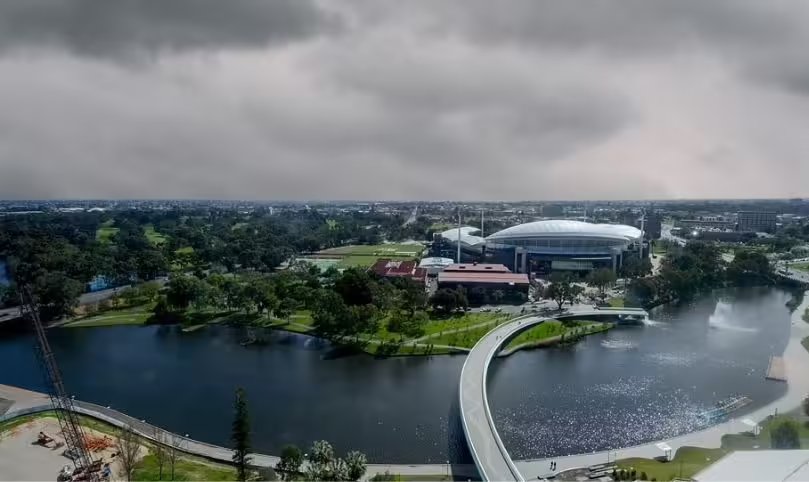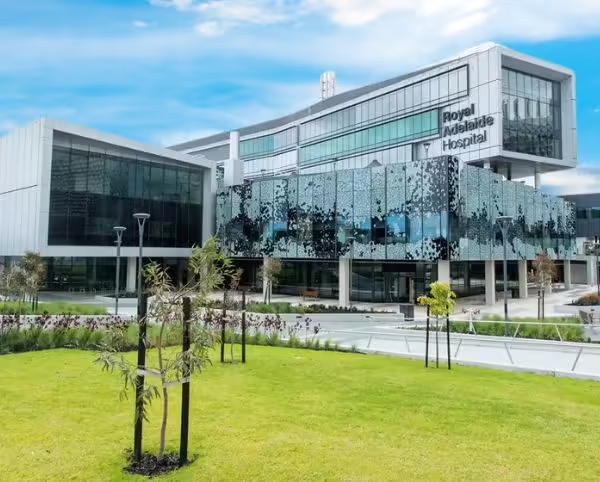Founding of Adelaide: The Visionaries and Early Days
In December 1836, settlers founded Adelaide. This began a journey that helped Adelaide become a lively city in Australia. Edward Gibbon Wakefield had the original ideas for Adelaide. He had a plan for settling South Australia.
Wakefield’s plan aimed to bring free settlers to the area. These settlers could farm the land and build a strong, self-sufficient community.
Central Figures in Adelaide’s Founding
Colonel William Light was key to this vision. He was the first Surveyor-General of the city. He helped design the layout of Adelaide. Light’s careful planning was groundbreaking, focusing on creating useful city areas while also protecting the natural environment.
Table of Contents
ToggleHe showed great respect for the Kaurna people. They are the traditional owners of the land. He made sure their sacred sites were included in the city’s plan. This helped create a peaceful relationship between the settlers and the indigenous community.
Encounter Bay: A Key Historical Site
Encounter Bay holds a significant place in the early history of Adelaide. It served as a pivotal point of contact between European settlers and the local indigenous population. The bay was important for early talks and trade. It helped start economic and cultural exchanges that shaped the colony’s future.
Influential Leaders and Their Contributions
The stories of important people like John Hindmarsh and John McDouall Stuart are part of Adelaide’s founding. Hindmarsh was the first Governor of South Australia. He faced early challenges.
These included managing resources and maintaining peace with the local Indigenous people. Meanwhile, John McDouall Stuart’s journeys explored large areas of the interior. This helped make way for more settlement and growth. These individuals, through their leadership and pioneering spirit, contributed significantly to the early successes and resilience of Adelaide.
Triumphs and Challenges in the Early Days
The early days of Adelaide were marked by both triumph and adversity. The founders faced many challenges, like few resources and living with indigenous communities. However, their vision and hard work helped create a successful city that celebrates its diverse history and culture.
Regenerate Response
Historical Landmarks and Influences
Adelaide, the capital of South Australia, has many historical landmarks that showcase its history. The Royal Adelaide Hospital was founded in 1840. It played an important role in caring for early settlers. This hospital showed the community’s dedication to health and progress.
Royal Adelaide Hospital
The Adelaide Gaol, constructed in 1841, stands as one of the oldest buildings, reflecting the early colonial justice system. Today, it serves as a museum, preserving tales of its intriguing history and the lives that once passed through its walls.
Adelaide Gaol
Founded in 1857, the Adelaide Botanical Gardens offer a serene retreat for lovers of nature and education. These gardens are important for botanical research and conservation, housing an impressive collection of rare and endangered species.
Adelaide Botanical Gardens
The River Torrens, winding through the city, has been essential to Adelaide’s growth since its beginnings. It facilitated trade and became a lively social hub. Now, the River Torrens Linear Park offers recreational space that beautifully balances urban life with nature.
River Torrens
These landmarks celebrate Adelaide’s history. They honor the people and events that shaped the city. They show how Adelaide grew from a small settlement to a lively metropolis.
Evolution Through the Years: Natural and Cultural Growth
Adelaide changed from a young colony to a busy city. This journey is interesting and shows both natural growth and cultural success. The city’s closeness to the Murray River has been key in shaping its farming activities. These activities are the backbone of its economy.
The rich land by the river helps grow crops. This supports the local economy and affects the daily lives of the people living there. As the lifeblood of South Australia’s agriculture, the Murray River provided essential resources that enabled early settlers to thrive.
The Role of the Murray River
Adelaide’s strategic location along the Gulf St Vincent also played a crucial role in its expansion. The accessible coastline facilitated trade, bolstering the city’s economic growth. As trading routes expanded, so did Adelaide’s urban footprint, transitioning from a modest settlement to a bustling cityscape.
Strategic Location Along the Gulf St Vincent
Culturally, Adelaide has made significant strides in creating an enriching environment for both locals and visitors. The Adelaide Town Hall was built in 1866.
It became a key place for community events and social gatherings. In 1881, the Art Gallery of South Australia opened. It aimed to enrich the city’s culture. The gallery displayed many types of art.
Cultural Milestones: Adelaide Town Hall and Art Gallery
Throughout these years, Adelaide has skillfully managed to balance growth with the preservation of its natural and cultural heritage. Initiatives to maintain the natural landscapes, including parks and green spaces, reflect a commitment to environmental care. Supporting cultural institutions shows a dedication to the arts and public spaces. This helps build a community that values its history and is excited about future growth.
Balancing Growth with Heritage Preservation
Adelaide has grown in a way that combines nature and culture. The city’s development shows a balance between these two elements. The Murray River is important for agriculture. The growth from Gulf St Vincent has also been key.
Cultural landmarks like the Adelaide Town Hall and the Art Gallery of South Australia support the lively community. This delicate balance of development and preservation continues to define Adelaide’s unique character.
Modern Adelaide: A Vibrant and Diverse Australian City
Today, Adelaide shows its rich history and growth. It has become a modern Australian city known for its diversity and energy. Modern Adelaide seamlessly blends contemporary influences with its storied past, making it a unique travel destination.
Central to the city’s charm is its thriving tourism scene, which remains a significant draw for visitors. Popular places like the Adelaide Botanic Garden and the River Torrens attract many tourists. They offer calm views and fun activities that are easy to reach from the city center.
Tourism and Attractions
The city’s ongoing growth is highlighted by its modern buildings and roads, which have made Adelaide ready for the future. Yet, it ardently honors its historical roots. The streets mix modern buildings and old colonial styles, showing the city’s respect for its original design. Landmarks commemorating its past, such as the iconic red kangaroo symbol, remain prominent, tying contemporary Adelaide to its beginnings.
Infrastructure and Architecture
Adelaide’s lively culture is clear in its diverse population, where different cultures mix to create many experiences. This diversity is shown through cultural festivals, art events, and food that feature tastes from around the world. The city’s busy markets, like the Adelaide Central Market, show this cultural mix and give locals and tourists a lovely experience.
Cultural Diversity and Festivals
Additionally, Adelaide’s position on the global stage has strengthened, drawing tourists and professionals from around the world. The city has earned accolades for its livability, often cited for its balance between urban convenience and natural beauty. The ongoing development projects in the city highlight Adelaide’s ambition to further enhance its global appeal while fiercely maintaining the essence of its historical heritage.
Global Standing and Development
In celebrating its heritage while embracing modern advancements, Adelaide proves to be not just a city with a past but also a dynamic, forward-looking metropolis that invites exploration and admiration from visitors worldwide.
¦The information in this article may become outdated due to the passage of time. If you notice any errors, please inform us in the comments. This will help us maintain accurate information for our guests¦
Frequently Ask Questions about The Exciting Journey of Adelaide from Founding to Modern Day
Q1: When was Adelaide founded?
A1: Adelaide was founded in December 1836.
Q2: Who had the original ideas for founding Adelaide?
A2: Edward Gibbon Wakefield had the original ideas for founding Adelaide.
Q3: What role did Colonel William Light play in the founding of Adelaide?
A3: Colonel William Light was the first Surveyor-General and helped design the layout of Adelaide.
Q4: Who are the traditional owners of the land where Adelaide is located?
A4: The Kaurna people are the traditional owners of the land.
Q5: What was significant about Encounter Bay?
A5: Encounter Bay was an important meeting place between European settlers and the local indigenous population.
Q6: Who was John Hindmarsh?
A6: John Hindmarsh was the first Governor of South Australia, overseeing early challenges.
Q7: What did John McDouall Stuart do?
A7: John McDouall Stuart led expeditions that opened up the interior of Australia for settlement.
Q8: What is the Royal Adelaide Hospital known for?
A8: The Royal Adelaide Hospital, founded in 1840, played an important role in caring for early settlers.
Q9: When were the Adelaide Botanical Gardens founded?
A9: The Adelaide Botanical Gardens were founded in 1857.
Q10: Why is the River Torrens important to Adelaide?
A10: The River Torrens has been essential for trade and social activities in Adelaide.
Q11: What is a key cultural site in Adelaide built in 1866?
A11: The Adelaide Town Hall is a key cultural site that was built in 1866.
Q12: What opened in Adelaide in 1881?
A12: The Art Gallery of South Australia opened in 1881.
Q13: How does Adelaide balance growth with heritage preservation?
A13: Adelaide maintains parks and green spaces while supporting cultural institutions to preserve its history.
Q14: What attracts many tourists to modern Adelaide?
A14: Popular attractions like the Adelaide Botanic Garden and the River Torrens draw many tourists.
Q15: What has Adelaide earned recognition for?
A15: Adelaide has earned accolades for its livability and balance between urban convenience and natural beauty.




